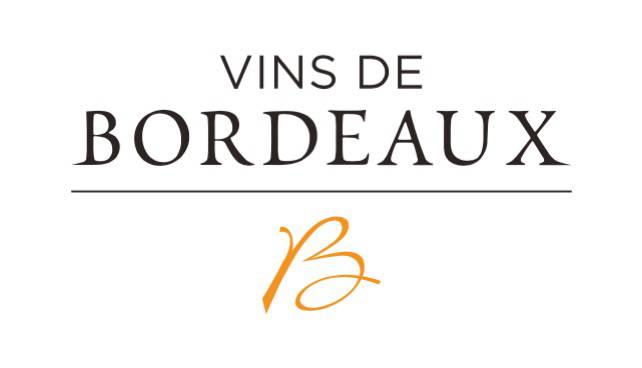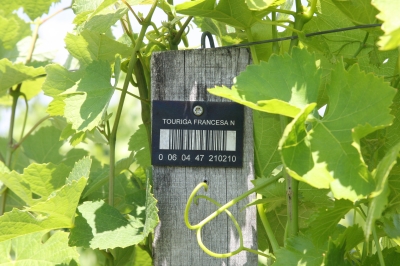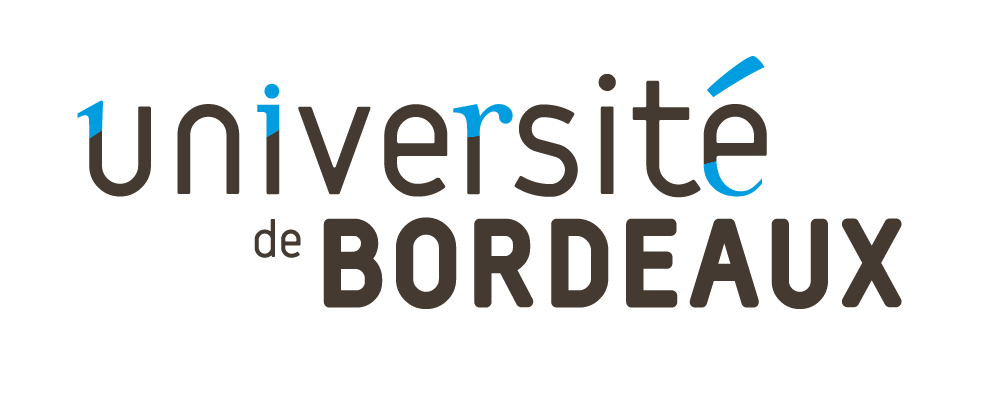VitAdapt.
Vitadapt, for Vitis Adaptation, is a project that has been initiate in 2007 in order to study the behavior of Bordeaux grape varieties in a changing climatic context, as well as the adaptation and potential of possible candidates for an introduction to the Bordeaux grape varieties. It is based on an experimental plot called plot 52 to refer to the number of grape varieties of which it is composed. This plot has been established in 2009 on the INRA Domaine de la Grande Ferrade on gravelly soil, representative of this region of Bordeaux (Pessac-Léognan appellation), with the financial support of the CIVB (Conseil Interprofessionnel du Vin de Bordeaux ) and the Aquitaine region. It is made up of fifty-two different grape varieties, twenty-one white grape varieties and thirty-one red grape varieties. Among these grape varieties, we find the grape varieties currently grown in France. Bordeaux which serve us as a reference and markers of global warming, but also grape varieties from other French and foreign vineyards. We are therefore studying grape varieties from Languedoc, Spain, Italy, Greece, Portugal and grape varieties from Eastern Europe (Bulgaria and Georgia, countries of origin of the cultivated vine). e, more than 6000 years ago).
For this study, we selected; a plot as homogeneous as possible at ground level and we have chosen the grape varieties according to the following criteria:
- Their reputation and global importance in plantation area,
- Their degree precocity with a high proportion of relatively late grape varieties, especially on maturity,
- Their qualitative potential (balance, aromas, structure) in their production area,
- Oeligological characteristics such as structure, aromatic profile and capacity quite similar to products made from Bordeaux grape varieties.
The 52 grape varieties (one clone/varietal) have been grafted on a single rootstock to be able to be compared. We have implanted 50 feet per variety, at reason of 5*10 feet, on 5 different blocks, and in a random way. This set represents 2600 individuals spread over 42 rows with 13 pickets of 5 feet, at a density of 5500 stumps/ha on 0.6ha.
The objectives are multiple:
- Studying the behavior of Bordeaux grape varieties in a changing climatic context

- Study the possibilities of adaptation and the qualitative potential of possible candidates for an introduction into the existing grape varieties
- Develop a large phenotyping database of these grape varieties, i.e. record and archive observation data and measurements of many characters of these grape varieties ,
In particular the establishment of a chronology of precocity. from a large number of grape varieties
And to quantify their physiological response to drought.
On this experimental device, the measurements carried out are numerous. They concern both the cycle of the vine, with notations of the different stages of development or phenological stages - budburst, flowering or veraison - only weekly monitoring with determination of the composition of the grapes throughout the ripening period. But we also carry out measurements to assess the vigor and the viticultural and agronomic characteristics of Bordeaux grape varieties (for example with the weighing of berries or pruning wood, or the evaluation fertility and yield of the grape varieties). We study the behavior of varieties in the face of water stress at using an indicator that measures the water stress suffered by the vine during the ripening period (“ δ13C” or ratio between the isotopes 12C and 13C measured on the sugars of the grapes” t at maturity). We also assess sensitivity. grape varieties to diseases and pests. This follow-up in the vineyard has been supplemented since 2015 by micro-vinifications in order to characterize the oelig;nological qualities of the planted grape varieties and by a detailed analysis of the mineral status of the grape varieties. , and more particularly the nitrogen status.
This project studies the consequences of the variability climate change and is therefore long-term.

CIVB - Conseil Interprofessionnel du Vin de Bordeaux






